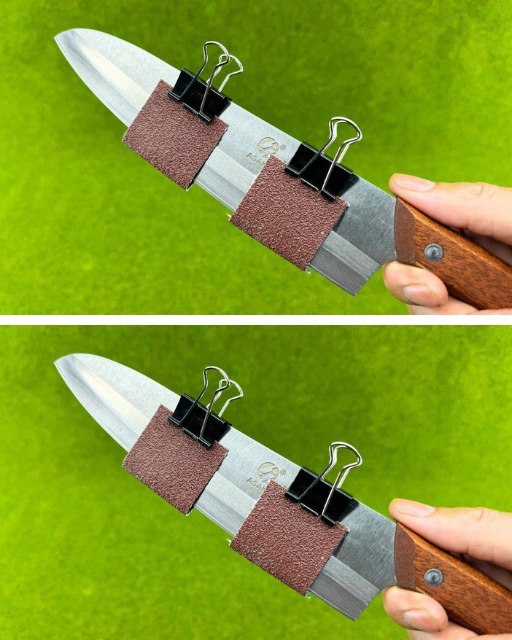Introduction
A sharp knife is the cornerstone of every kitchen, making meal prep faster, safer, and more enjoyable. But achieving a razor-sharp edge can feel intimidating. What if there was an easy, effective method to sharpen your knife with surprising results? In this guide, we’ll walk you through a foolproof way to sharpen your knife like a pro, ensuring it slices through ingredients effortlessly.
Ingredients and Tools You’ll Need
A dull knife – Any kitchen knife that needs sharpening.
A whetstone or sharpening stone – Medium and fine grit are recommended.
Water – For lubricating the whetstone.
A towel or non-slip mat – To stabilize the stone.
A honing rod (optional) – To align the blade after sharpening.
Marker (optional) – To ensure you sharpen at the correct angle.
Directions
Prepare the Whetstone
Soak your whetstone in water for 10–15 minutes until bubbles stop appearing. This ensures proper lubrication, preventing damage to the knife blade.
Secure the Stone
Place the whetstone on a towel or non-slip mat to keep it steady. Start with the coarser grit side facing up.
Set the Angle
Hold the knife at a consistent angle, typically 15–20 degrees for most kitchen knives. You can use a marker to color the blade’s edge to help guide your sharpening.
Sharpen the Blade
a. Slide the blade across the stone in a sweeping motion, applying light pressure. Move from the base to the tip, covering the entire edge.
b. Repeat this motion 5–10 times on one side, then switch to the other side.
Flip to Fine Grit
Turn the stone to its fine grit side and repeat the process for a polished, razor-sharp edge.
Hone the Edge (Optional)
Use a honing rod to realign the blade, ensuring maximum sharpness and precision.
Test Your Knife
Test the sharpness by slicing through a sheet of paper or cutting a tomato effortlessly.
Serving and Storage Tips
After Sharpening: Wipe your knife clean and dry it immediately to prevent rust.
Storage: Store your knife in a knife block, magnetic strip, or sheath to maintain the sharp edge.
Variations
Use a Knife Sharpener: For beginners, a manual or electric knife sharpener is a user-friendly option.
Japanese Waterstones: For premium knives, consider using Japanese waterstones for finer precision.
Leather Strop Finish: Add a final touch with a leather strop to achieve an ultra-polished edge.
FAQ
1. How often should I sharpen my knives?
It depends on usage. Regular kitchen knives typically need sharpening every 3–6 months, while honing can be done weekly.
2. Can I sharpen serrated knives?
Yes, but it requires a special serrated knife sharpener or professional service to maintain the teeth.
3. What if I don’t have a whetstone?
You can use a ceramic mug’s unglazed bottom or even fine-grit sandpaper in a pinch.
4. Is a sharp knife safer than a dull one?
Absolutely! A sharp knife requires less force, reducing the risk of slips and accidents.
Mastering knife sharpening isn’t just a kitchen skill—it’s an art that transforms cooking into a seamless, enjoyable experience. With these easy steps and tips, you’ll always have a trusty, razor-sharp blade at your side.
continued on next page
